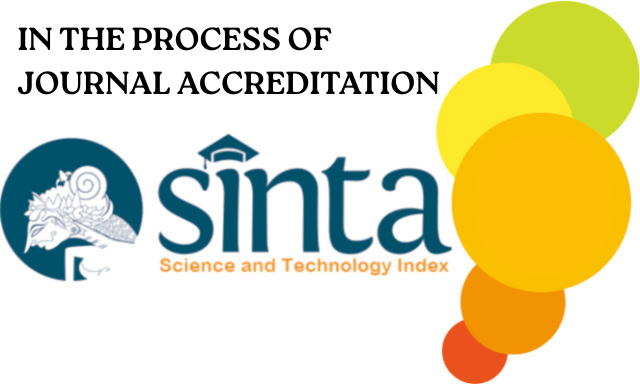OUTPATIENT REGISTRATION SERVICE FLOW AT SEI PANAS COMMUNITY CENTER
DOI:
https://doi.org/10.54973/abjcd.v6i2.709Keywords:
Registration, Outpatient, Community Health CenterAbstract
Service activities begin with the patient registration process through the e-Queue machine and the Outpatient Registration Area (TPPRJ). The patient registration procedure in the outpatient department is divided into new and existing patients. A structured procedure can reduce potential delays in the registration process, thereby speeding up the service flow and increasing patient satisfaction. The outpatient registration process at the Sei Panas Community Health Center has been running according to established procedures, with the e-Queue system simplifying patient registration. However, observations at the Sei Panas Community Health Center indicate that some patients do not bring their identification, thus causing obstacles in the outpatient registration process. This will impact the ineffectiveness of outpatient registration services at the Sei Panas Community Health Center. Some of these obstacles include patients who do not bring their identification (KTP / KK / BPJS / KIA) when registering for treatment. Due to these obstacles, we conducted outreach to patients to bring their identification before coming to the health center. This will not hinder staff in carrying out the registration process.
Downloads
References
Achmad, H., Mazidatus, L., Nabiilah, A., & Fitriana, N. (2023). Analisis Faktor Keberhasilan Sistem Informasi Manajemen Puskesmas (SIMPUS) di Indonesia: Systematics Literature Review. Jurnal Ilmiah Sistem Informasi Dan Ilmu Komputer, 3(2), 153–166. https://doi.org/10.55606/juisik.v3i2.497
Amin, M., Setyonugroho, W., & Hidayah, N. (2021). ImPujihastuti. (2010). Isti Pujihastuti Abstract. Prinsip Penulisan Kuesioner Penelitian, 2(1), 43–56.plementasi Rekam Medik Elektronik: Sebuah Studi Kualitatif. JATISI (Jurnal Teknik Informatika Dan Sistem Informasi), 8(1), 430–442.
Asih, H. A., & Indrayadi. (2023). Perkembangan Rekam Medis Elektronik di Indonesia: Literature Review Research On Electronic Medical Records in Indonesia: Literature Review. Jurnalpromotif Preventif, 6(1), 182–198. http://journal.unpacti.ac.id/index.php/JPP
Darwis, A. A. P., Yulia, N., Siswati, & Widjaya, L. (2022). Tinjauan Pelaksanaan Pendaftaran Rawat Jalan Dipuskesmas Ciputat Timur Tangerang Selatan. Journal of Innovation Research and Knowledge, 1 No 10(10), 1355–1362.
Muliansah, R., & Budihartanti, C. (2020). Analisa Pemanfaatan e-Puskesmas di Loket Pendaftaran pada Puskesmas Kecamatan Pademangan dengan Metode PIECES. Journal of Computer Science and Engineering (JCSE), 1(1), 17–29. https://doi.org/10.36596/jcse.v1i1.22
Nggode, M. R., & Ardan, M. (2024). Analisis Hambatan Dalam Implementasi Layanan E-Puskesmas Di Puskesmas Wonorejo Kota Samarinda Melalui Analisis Fishbone. Jurnal Pengabdian Kepada Masyarakat Nusantara, 5(2), 2825–2830. https://doi.org/10.55338/jpkmn.v5i2.3381
Permenkes RI. (2019). Peraturan Menteri Kesehatan RI No 43 tahun 2019 tentang Puskesmas. Peraturan Menteri Kesehatan RI No 43 Tahun 2019 Tentang Puskesmas, Nomor 65(879), 2004–2006.
Permenkes RI. (2022). Peraturan Menteri Kesehatan RI Nomor 24 tahun 2022 tentang Rekam Medis. Peraturan Menteri Kesehatan Republik Indonesia Nomor 24 Tahun 2022, 151(2), 1–19.
Ramdani, D. (2024). Evaluasi Sistem Informasi Manajemen Puskesmas (ePuskesmas) dalam Meningkatkan Mutu Layanan di Puskesmas Gununghalu. Jurnal Festival Riset Ilmiah Manajemen & Akuntansi, 6681(7), 1–109.
Suary, S. I., & Yunengsih, Y. (2024). Gambaran Penerapan Sistem Informasi Manajemen Puskesmas (SIMPUS) Di UPTD Puskesmas Lawang Gintung Kota Bogor. Jurnal Media Informatika, 6(1), 260–266. http://ejournal.sisfokomtek.org/index.php/jumin/article/view/3953













